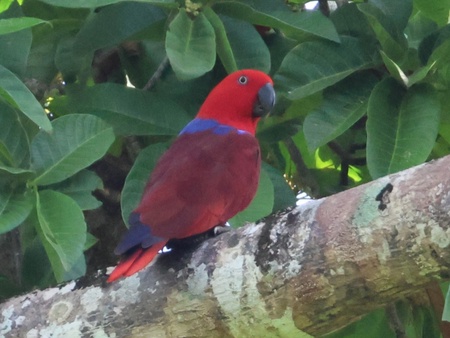An international team of scientists has made a groundbreaking discovery that could reshape our understanding of how global biodiversity evolved.
By reconstructing the evolution of species over the past 45 million years, researchers found that the geographic origins of many plants, insects and mammals are more closely linked than previously thought.
Led by the University of Aberdeen in collaboration with Bangor University in Wales, Lakehead University in Canada, and several Indonesian institutes including IPB University in Bogor, the team used Southeast Asia - one of the world’s most biodiversity-rich regions - as a natural laboratory to trace the geographic origins of a wide range of species.
Their findings challenge long-standing theories that groups of flora and fauna evolved separately on different landmasses before diversifying across the region.
Central to this research is a new evolutionary model, developed at the University of Aberdeen, which enabled the team to include extinct species in their analysis for the first time.
This innovative approach has not only provided a more complete evolutionary picture but has paved the way for a fresh understanding of how biodiversity arose and spread across landmasses. The model is now being used in international collaborations to revisit the evolutionary history of other continents, promising to reshape our understanding of global biodiversity.
“We wondered whether several groups of plants and animals could have the same geographic origin as new geological evidence contrasted with current reconstructions of species’ origin and spread,” said Dr Leonel Herrera Alsina, Research Fellow at the University of Aberdeen’s School of Biological Sciences. “However, the ongoing extinction of species throughout evolution takes away key information to reconstruct the past.”
The inclusion of extinct species in the modelling process allowed researchers to trace evolutionary patterns further back in time, revealing that many groups of species in Southeast Asia spread across the entire region earlier than previously thought.
This result reinforces the idea that land bridges existed and acted as stepping stones in the spread of species out of Borneo and Continental Asia.
“Previous methods ignored the impact of extinct species but, by incorporating them, we’ve been able to create a more accurate and comprehensive picture of how the incredible biodiversity of this region evolved,” said Professor Lesley Lancaster, Personal Chair at the University of Aberdeen.
“This new understanding aligns with recent geological findings and could transform how we view the origins and spread of species globally.”
Professor David Burslem, Director of the Interdisciplinary Institute at the University of Aberdeen, emphasised the broader significance of the study: “This research underscores the importance of studying ecological and geological processes in unison. The evolutionary patterns we see today are deeply intertwined with the region’s geological history. Integrating these disciplines allows us to better understand the origins of biodiversity and how it has developed over millions of years."
The study, published this week by the Royal Society, sheds new light on the evolutionary history of life on Earth and offers valuable insights into how evolutionary processes can be integrated into conservation prioritisation, helping to safeguard biodiversity as ecosystems face increasing pressures from climate change.
“Our findings revolutionise the way we think about the evolution of biodiversity, not just in Southeast Asia but globally,” added Professor Justin Travis, Personal Chair at the University of Aberdeen. “This model, now being used in collaborations around the world, opens the door to revisiting long-held theories about evolution on other continents as well.
“The work sets the stage for future research that will revise our understanding of how species have adapted and diversified over millions of years.”
The research was funded by UKRI’s Natural Environment Research Council (NERC). The paper is published in the journal, Proceedings of the Royal Society, Series B.


